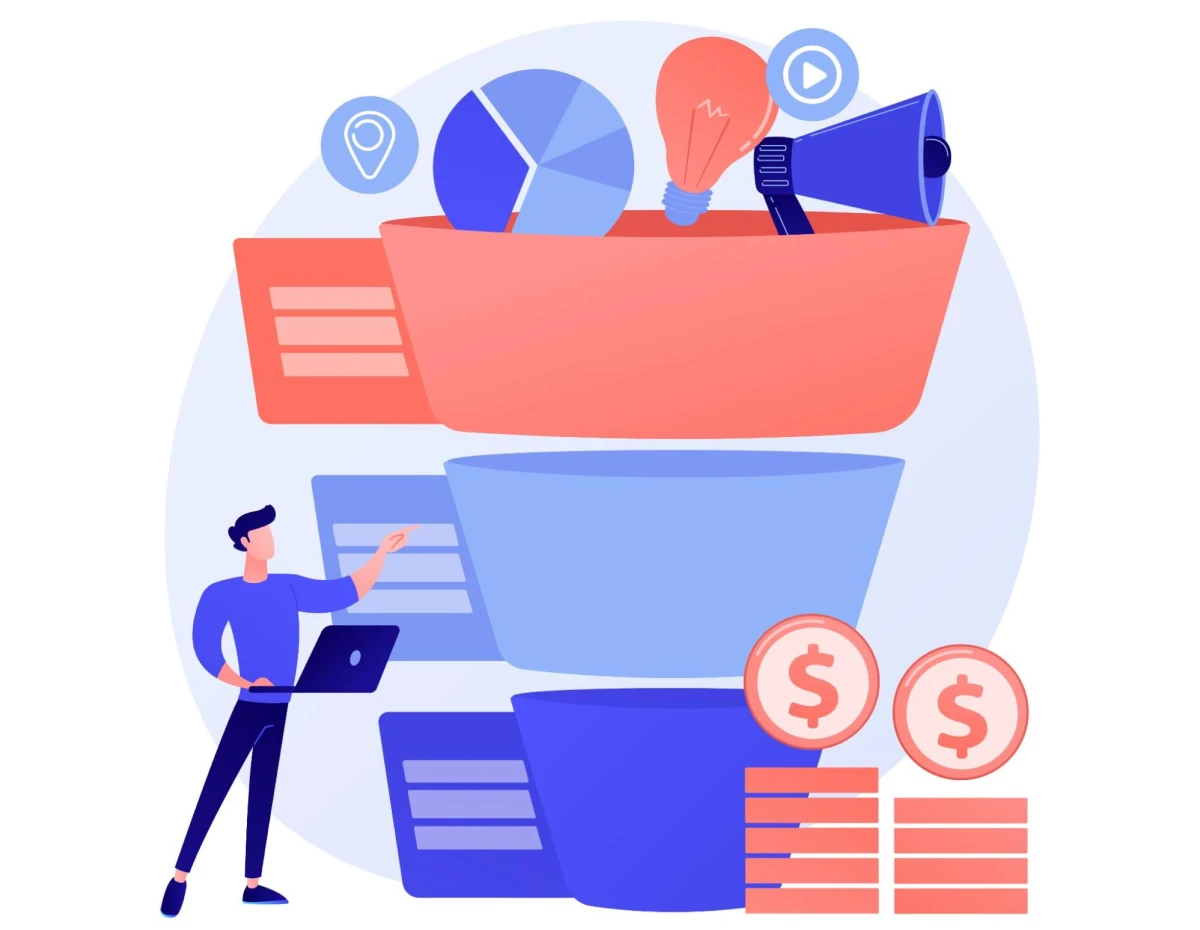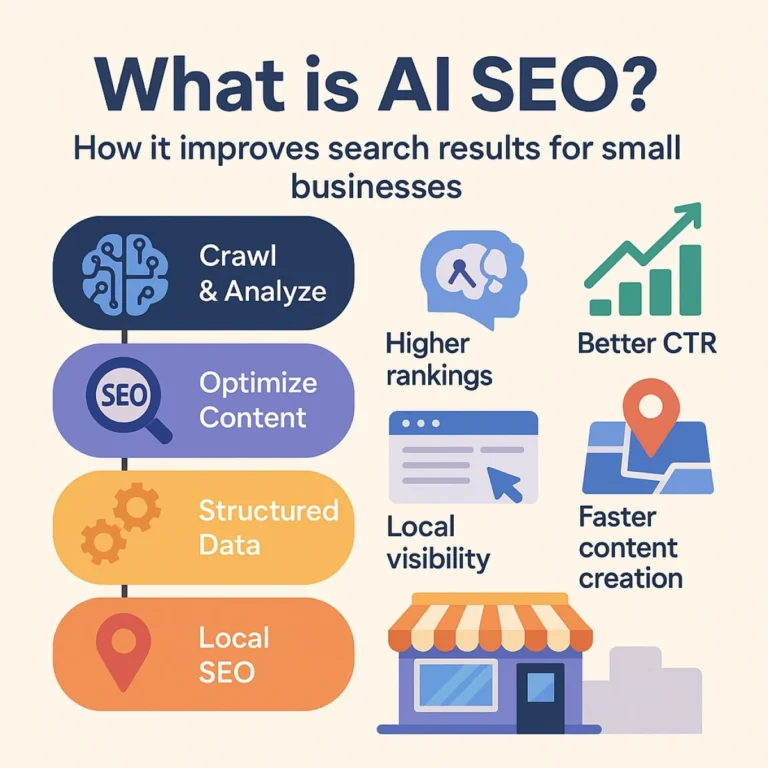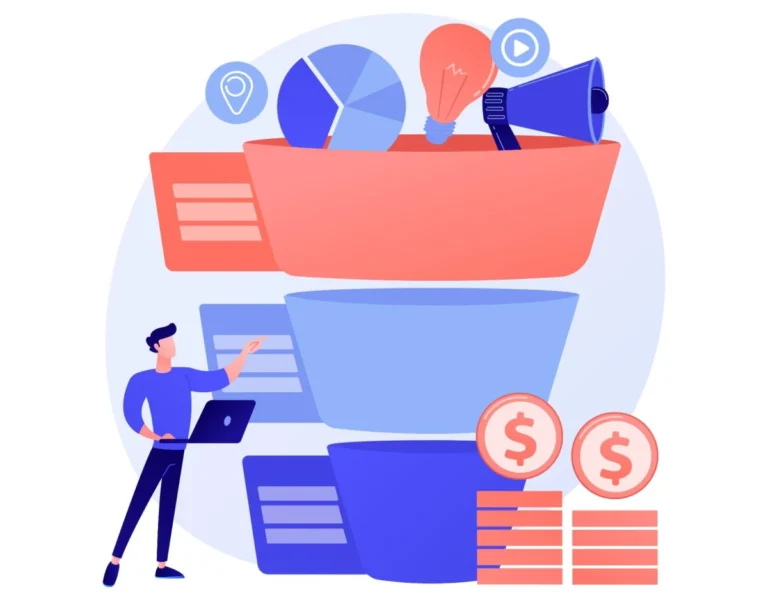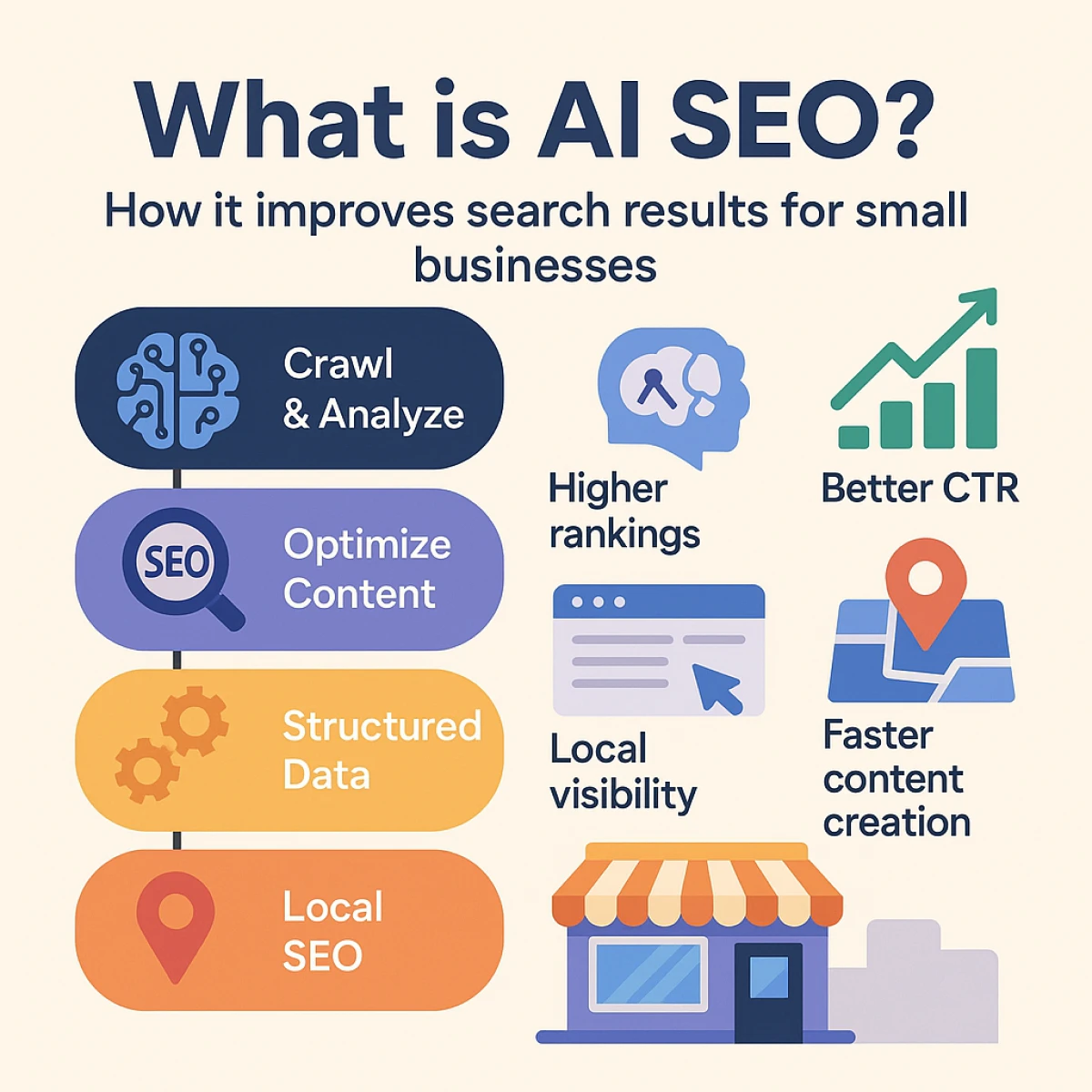Your website attracts visitors, yet 96% of them aren’t ready to buy right away. This surprising reality shows why understanding marketing funnel stages plays a significant role in your business’s success. Most people think customers follow a simple path to purchase, but the reality isn’t that straightforward.
The marketing funnel breaks down your potential customers’ experience from awareness to final purchase. Many businesses don’t realize this experience happens in three distinct phases, and each phase needs its own strategy.
Building Brands Marketing has found that each marketing funnel needs a unique design based on actual customer buying patterns, not your preferred selling method. This piece will help you identify gaps in your current approach and build a marketing strategy that connects with your audience at every stage, whether you face challenges with awareness, conversion, or customer retention.
Understanding the Marketing Funnel
What is a marketing funnel?
A marketing funnel represents stages that guide potential customers toward conversion. Marketing teams use it to plan and measure their efforts through various content types and materials. The concept originated in 1898 with the AIDA model (Awareness, Interest, Desire, Action). Today’s complex consumer behavior has substantially changed this model.
This framework shows how customers move from finding your brand to making purchases. You can spot where users leave and improve their involvement.
The three core stages: TOFU, MOFU, BOFU
Top of Funnel (TOFU)
Middle of Funnel (MOFU)
Bottom of Funnel (BOFU)
Why customer journeys are rarely linear
Customer journeys differ from traditional marketing funnels. They’re dynamic, non-linear, and shaped by interactions across many touchpoints. Modern consumers tend to engage through four overlapping behaviors: streaming, scrolling, searching, and shopping, and often moving among them rather than following a fixed path.
People don’t move smoothly between stages. They switch tabs, leave carts, rediscover brands on social media, read reviews later, and eventually sign up. Today’s digital world shows customers entering and leaving the funnel at unexpected points.
Marketing strategies need flexibility to accommodate this non-linear reality and meet customers wherever they are in their path.
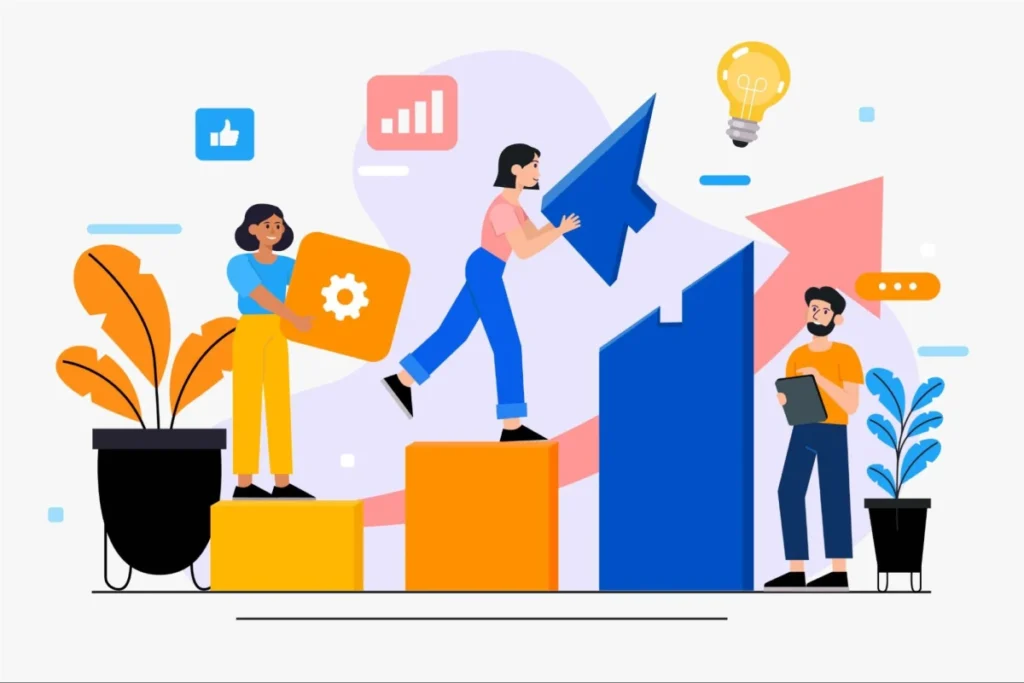
What Most Businesses Get Wrong at Each Funnel Stage
Mistake 1: Focusing only on bottom-of-funnel conversions
Research shows that just 5% of your total addressable market wants to buy right now. In spite of that, businesses pour too much money into BOFU campaigns. They ignore awareness-building initiatives and miss out on 95% of potential customers. This creates a dangerous pattern, as revenue targets grow, companies push more budget toward conversion tactics. The prospect pool shrinks as a result.
Quick wins from conversion-focused marketing might feel good now, but they rarely help long-term growth. Bottom-funnel activities just can’t deliver without a healthy pipeline feeding them.
Mistake 2: Ignoring brand awareness and TOFU efforts
The COVID-19 outbreak pushed many companies to cut marketing budgets and pause brand awareness campaigns. This misses the point of how growth works. A 1-point boost in brand metrics like awareness pushes sales up by 1%.
Upper-funnel marketing helps both immediate results and future sales pipeline. Even the biggest brands keep running upper-funnel tactics to stay relevant. Your market position weakens when you stop these efforts, and competitors gain ground.
Mistake 3: Treating all leads the same in MOFU
Mistake 4: Lack of post-purchase engagement
Just 16% of companies focus on keeping their customers. Getting a new customer costs five times more than keeping an existing one. Brands often assume customers will come back on their own, a big mistake since existing customers are 60-70% more likely to convert than new prospects.
Post-purchase interactions build brand trust and boost retention rates. Companies miss valuable chances for repeat business and referrals without this engagement.
Mistake 5: Using disconnected tools and messages

How to Build a Full-Funnel Marketing Strategy
Start with customer research and segmentation
Understanding your audience deeply forms the foundation of any successful marketing funnel. Customer segmentation helps you reach different sections of your customers with relevant information at the right time.
Research shows 70% of consumers only participate with marketing that fits their interests, and 80% will only shop with brands that personalize their experience. Your audience segments should include demographics, psychographics, behavior, location, needs, or value to create targeted campaigns that resonate.
Line up content and messaging to each stage
Use the right channels for each funnel level
- TOFU: SEO, display advertising, and social media for brand awareness
- MOFU: Email nurturing, webinars, and detailed blog content for education
- BOFU: PPC advertising with conversion-focused landing pages
Measure and optimize continuously
Examples and Tactics That Work
Marketing campaigns need proven tactics at each funnel stage to succeed. Here are the most effective approaches based on real examples.
TOFU: SEO, social media, and native ads
MOFU: Webinars, email nurturing, and case studies
BOFU: Retargeting, demos, and urgency offers
Post-funnel: Loyalty programs and referrals
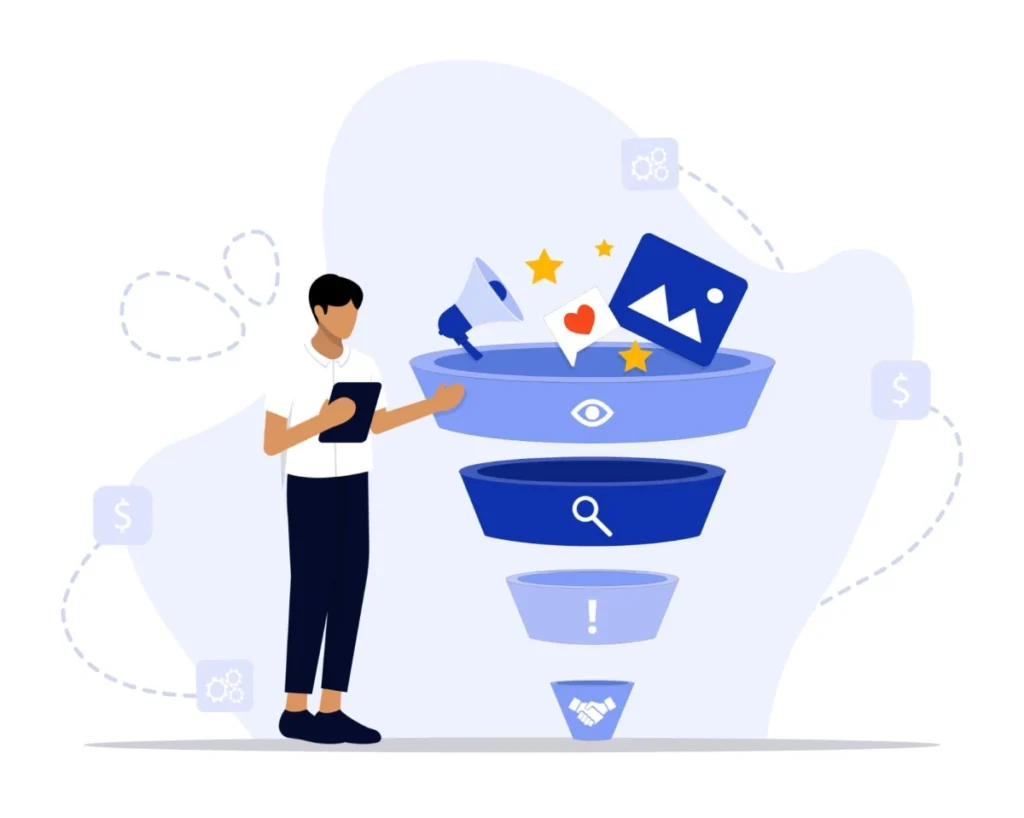
Conclusion
Marketing funnels may seem complex, but mastering them is needed for long-term growth. Successful marketing requires attention at every stage of the funnel, not just the bottom where conversions happen.
Customers rarely follow a straight path to purchase. They move between awareness, consideration, and decision-making in unpredictable ways. Your marketing should adapt to that reality, not force prospects through rigid steps.
Winning funnels start with customer research and segmentation. Companies that create their messaging for specific audiences at each stage see stronger engagement and better results. Continuous tracking and optimization then reveal what’s working, improving ROI and long-term performance.
If your marketing isn’t delivering consistent growth, it may be time for a fresh approach. Building Brands Marketing understands how to design strategies that connect every stage of the customer journey. We can help you build a funnel that attracts the right audience, converts effectively, and keeps customers coming back.
Let’s grow your business together. Reach out to Building Brands Marketing to start shaping a smarter, more connected marketing funnel.
Marketing Funnel FAQs
What are the main stages of a marketing funnel?
A marketing funnel typically consists of three core stages.
- Top of Funnel (TOFU) for awareness
- Middle of Funnel (MOFU) for consideration
- Bottom of Funnel (BOFU) for decision-making
Some models also include post-purchase stages for customer loyalty and advocacy.
Why is the traditional marketing funnel concept considered outdated?
The traditional marketing funnel is often seen as outdated because customer journeys are rarely linear in today’s digital landscape. Modern consumers move unpredictably between awareness, consideration, and decision stages, often entering and exiting the funnel at various points.
How can businesses improve their marketing funnel strategy?
To improve their marketing funnel strategy, businesses should focus on customer research and segmentation, align content to each funnel stage, use appropriate channels for different levels, and continuously measure and optimize their efforts. This approach typically leads to a 15-20% increase in marketing ROI.
What’s a common mistake businesses make in their marketing funnel approach?
A common mistake is focusing only on bottom-of-funnel conversions while neglecting top-of-funnel efforts. This approach ignores up to 95% of potential customers who aren’t ready to buy asap, limiting long-term growth potential.
How important is post-purchase engagement in the marketing funnel?
Post-purchase engagement is crucial but often overlooked. Only 16% of companies focus on customer retention, despite it being five times less expensive than acquiring new customers. Existing customers have a 60-70% conversion probability, making post-purchase interactions vital for repeat business and referrals.

